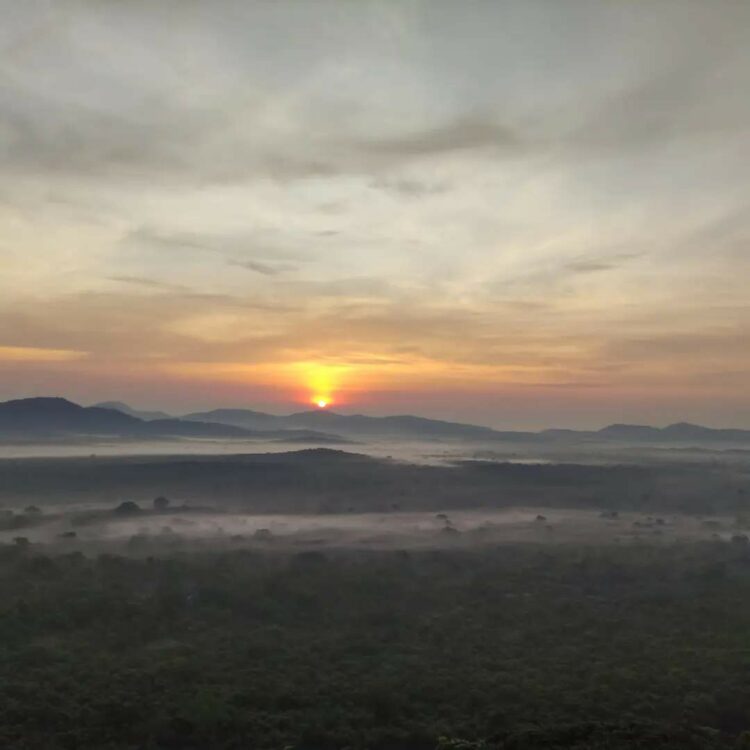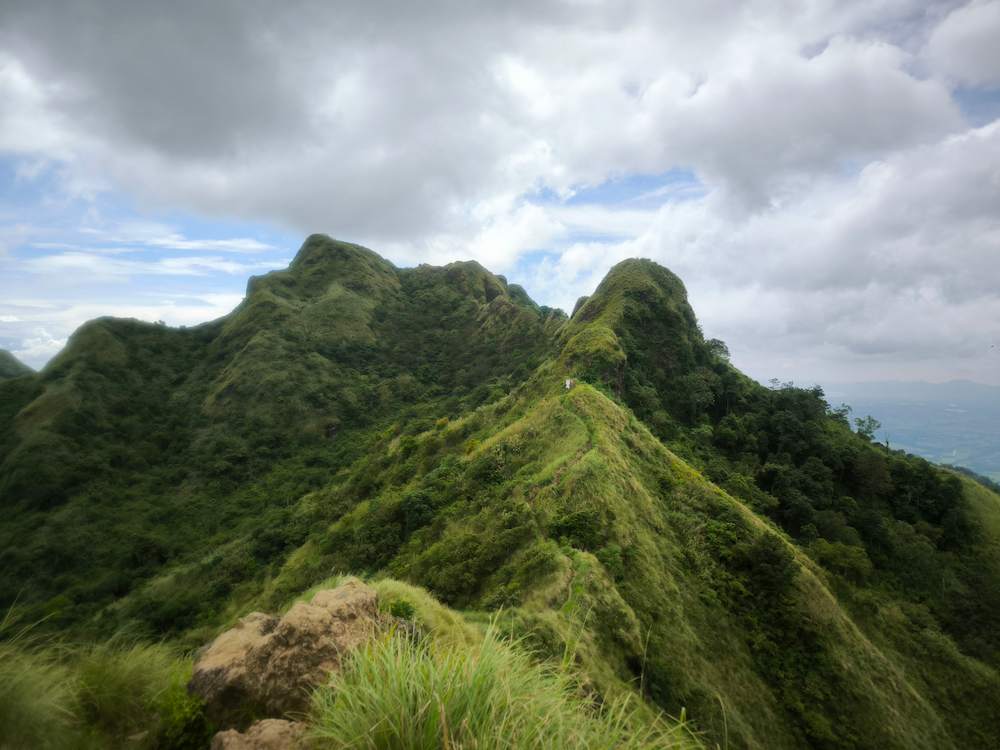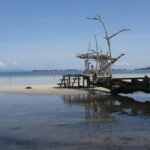General Information about Sigiriya Lion Rock
Once, the area where the Lion Rock of Sigiriya stands was a vast forest. Due to landslides and storms, a massive rock formation known as Lion Rock emerged in the 5th century, which today attracts large numbers of visitors. The fortress on the rock was built by King Kassapa I after he killed the previous king, his father. Kassapa built the fortress out of fear of his half-brother Moggallana, who sought revenge and returned in 491 with an army from South India to defeat Kassapa and secure the throne.
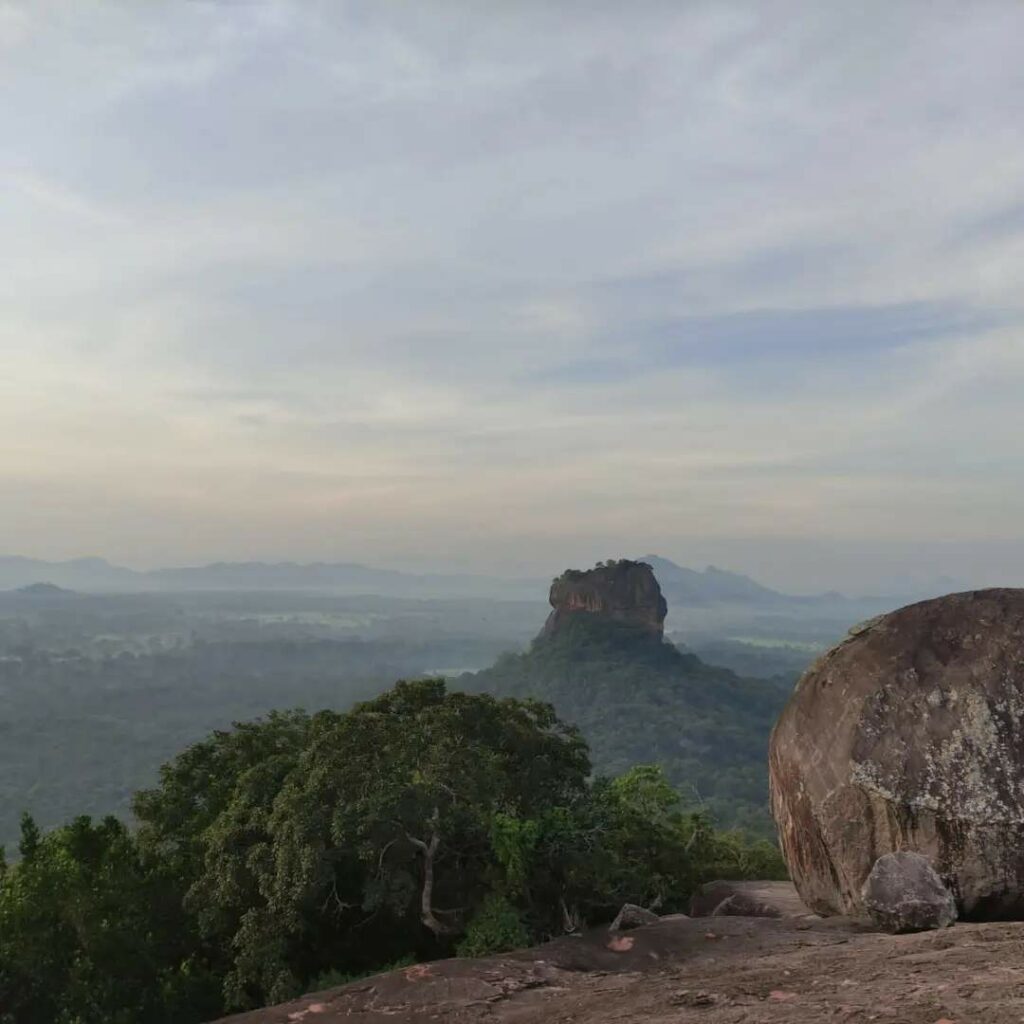
Today, Sigiriya Lion Rock is one of Sri Lanka’s main attractions and is located in the cultural triangle between Kandy, Anuradhapura, and Polonnaruwa. The nearly 200-meter-high rock got its name “Lion Rock” from the former Lion’s Gate on the north side of the rock. Unfortunately, only the carved paws of the predator are visible today. Another highlight includes the frescoes of bare-breasted women, better known as “Cloud Maidens.” The rock once housed palace buildings, of which only the foundations are now visible. There were also some cisterns used for storing drinking water. Since 1982, Sigiriya Lion Rock has been a UNESCO World Heritage site. In this post, you’ll find everything you need to know about visiting the Lion Rock and the nearby Pidurangala.
Is a Visit to Sigiriya Lion Rock Worth It?
Definitely! Even though the entrance fee is quite high, a visit to the rock is worth it and can be easily combined with a visit to the Dambulla Cave Temple and the nearby Pidurangala Rock. Sigiriya Lion Rock is one of the highlights of your Sri Lankan vacation.
When is the Best Time to Visit the Lion Rock?
Let me dispel an illusion – Sigiriya Lion Rock is busy at all times, as it is one of the country’s highlights. It is recommended to visit early in the morning or in the afternoon, as it gets very hot at the top.
Top Tips for Your Visit to Lion Rock
- Watch the sunrise from Pidurangala Rock and then head to Lion Rock and possibly to the Dambulla Cave Temple afterwards.
- Visit the museum beforehand to better understand the background.
- Bring plenty of water and sunscreen as it gets very hot.
- Travel by bus to save costs.
- Take your time with Sigiriya and don’t try to cover Polonnaruwa and Lion Rock in one day.
Alone or with a Guide?
This largely depends on how deeply you want to dive into the history and symbolism of the buildings and frescoes. We chose not to hire a guide as the input from the museum and the outlines were sufficient for us to get a general idea. However, if you want more detailed knowledge, you should consider the expertise of the local guides.
Highlights of Sigiriya
The undisputed highlight of the town is of course the Lion Rock. But apart from that, there are a few other things to see in the vicinity.
The Lion Rock of Sigiriya
The gigantic monolith is best visited in the morning to avoid the crowds and the midday heat. You walk on a path to the site and then up stone-carved paths and stairs to the top of the rock, where the remnants of the former fortress, including the Cloud Maidens and the former entrance gate (of which only the lion’s paws remain) can be seen. The ascent is less strenuous than initially expected, and you should plan about 3-4 hours for the Lion Rock.
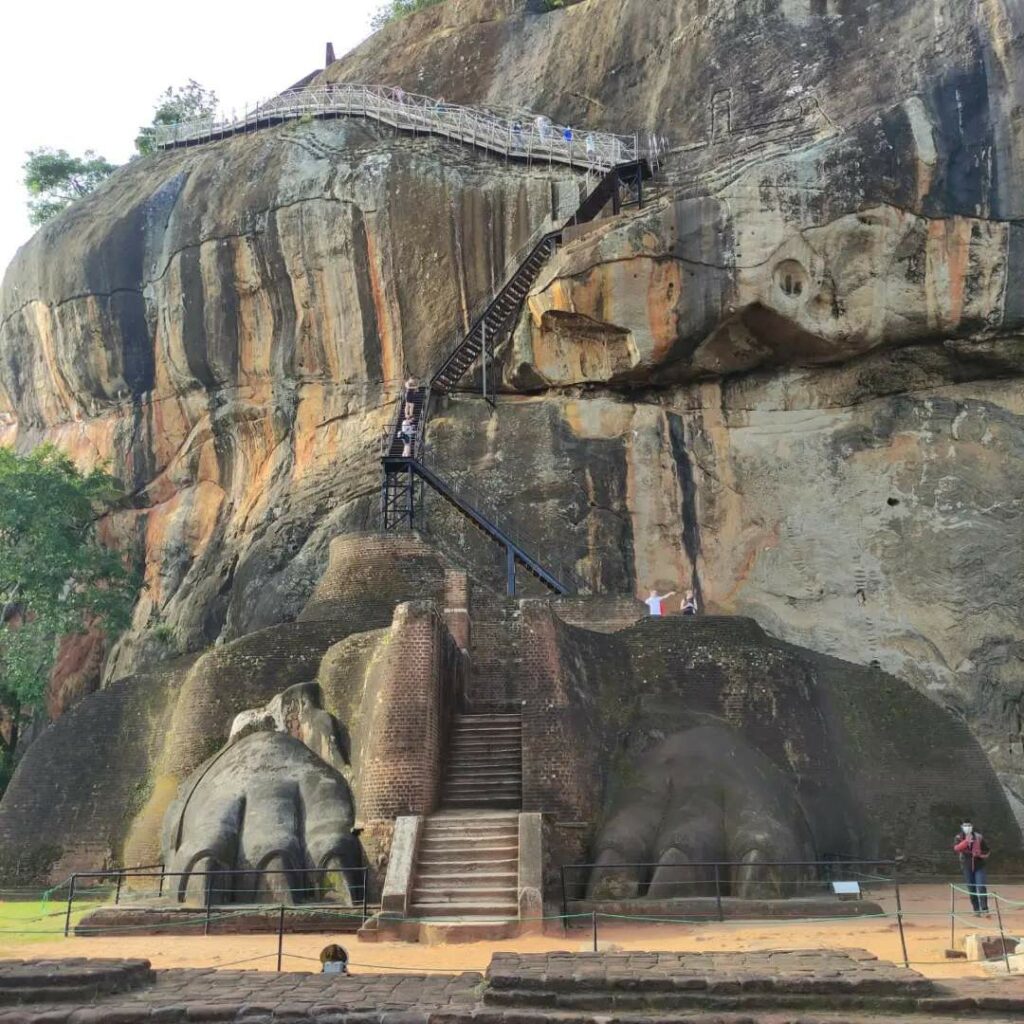
The former Lion’s Gate 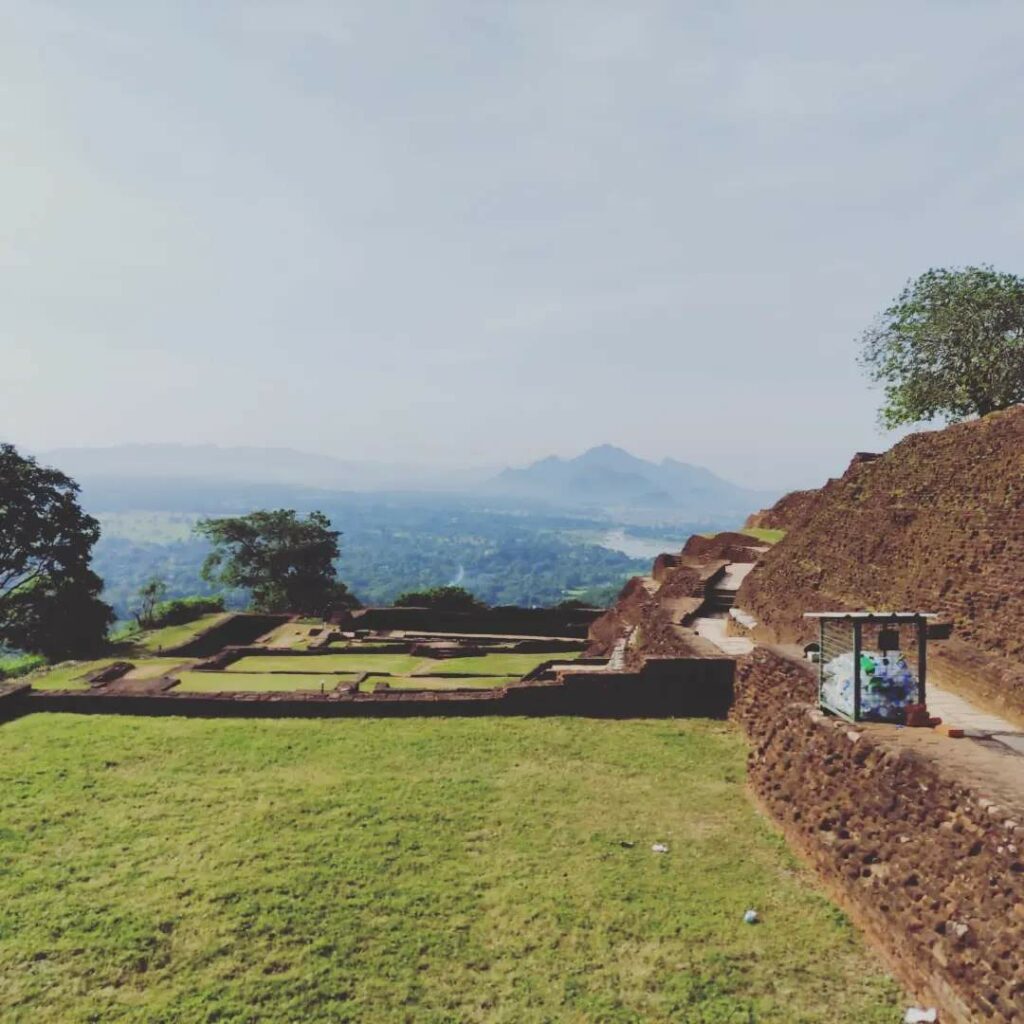
Ruins on top of the rock 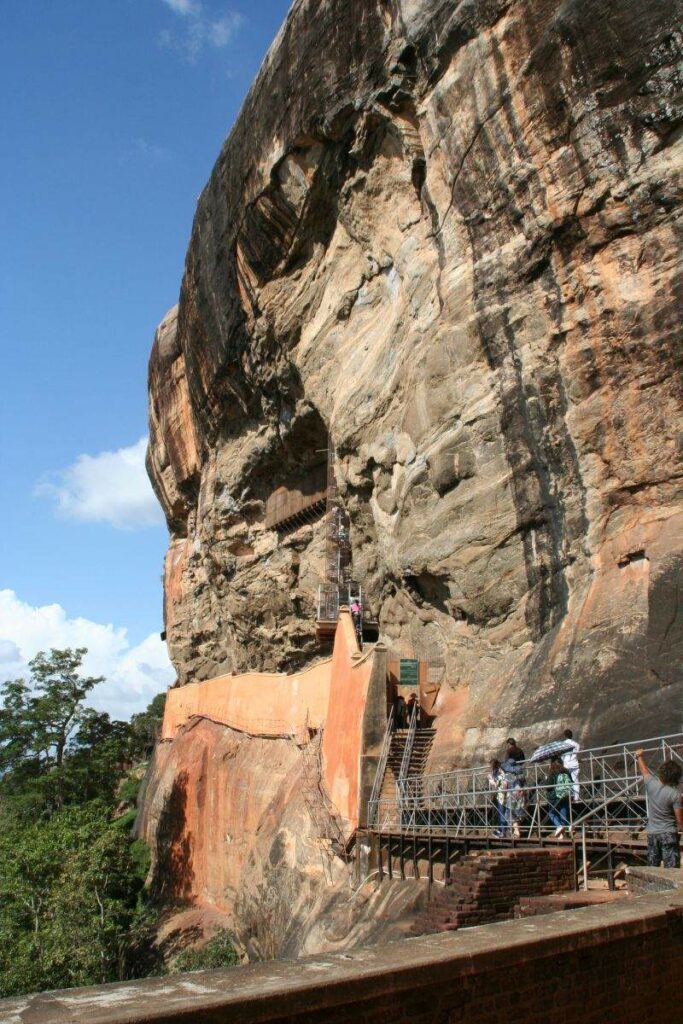
The path up to the rock
Sunrise from Pidurangala Rock
You can enjoy a particularly beautiful sunrise from the neighboring Pidurangala Rock. Although it is no longer a secret tip, it is still very beautiful and inexpensive to reach the rock by your own vehicle or a tuk-tuk. The ascent takes about 45 minutes and costs only 500 Rupee per person. From the rock, you have a great view of the Lion Rock. For more information about Pidurangala Rock, check out our post on it. Some people are content with the view and skip the entrance to the Lion Rock. We believe that both should be done, as they offer completely different experiences. It is a good idea to visit Pidurangala for sunrise and then head to Lion Rock to climb it afterwards.
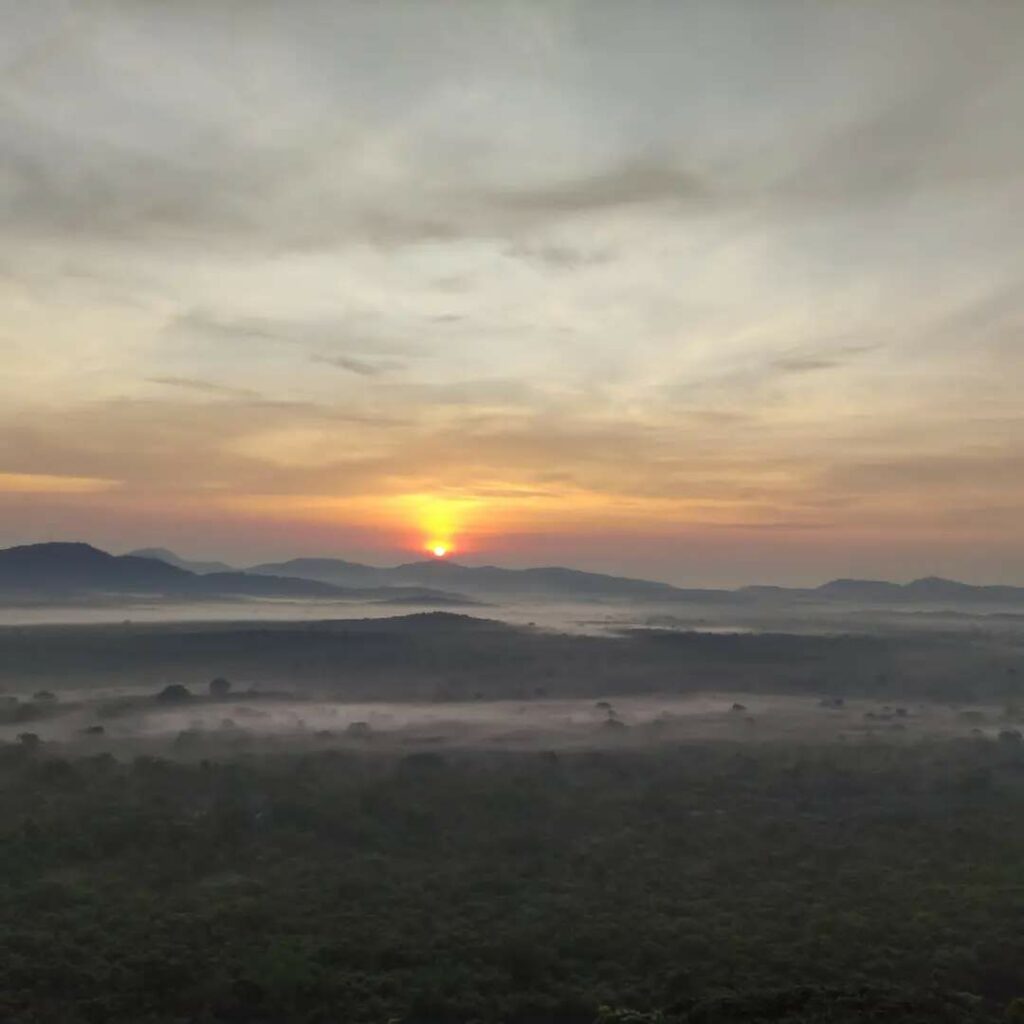
Sunrise at Pidurangala Rock 
View from Pidurangala Rock
Dambulla Cave Temple
Another highlight of the cultural triangle is the Dambulla Cave Temple. The temple complex consists of five large caves filled with Buddha statues. The entrance is somewhat hidden, and there are numerous monkeys in the area. It is advisable to go early in the morning to avoid the crowds. For more information about Dambulla Cave Temple, see our detailed post.
How to Get to Sigiriya Lion Rock
You can reach Sigiriya easily by taxi, tuk-tuk, or bus. We have opted for the local bus, which is much cheaper than the tuk-tuk and also an interesting experience. If you opt for the bus, you should take the route via Habarana, which is much faster than from Colombo. If you travel from Colombo, you need to change in Habarana to a local bus. The trip takes around 5 hours and costs about 200 Rupee. You should also always make sure that you check the local bus schedule to plan your return trip.
Opening Hours and Entrance Fees
The Lion Rock is open daily from 7:00 AM to 5:30 PM. The entrance fee is 30 USD or 10,000 Rupee. There is also an additional fee for cameras, which is around 500 Rupee.
Accommodation in Sigiriya
We stayed at the Sigiriya Village, which is a lovely hotel close to the Lion Rock. It offers various amenities and is well located. However, there are several other accommodation options in the area, so you can choose what best fits your preferences and budget.
Conclusion
A visit to Sigiriya Lion Rock is a must during a trip to Sri Lanka. With proper planning, an early start, and good preparation, you can enjoy the historical significance and natural beauty of this UNESCO World Heritage site. Combine your visit with a sunrise at Pidurangala Rock and a tour of the Dambulla Cave Temple for a complete experience.


